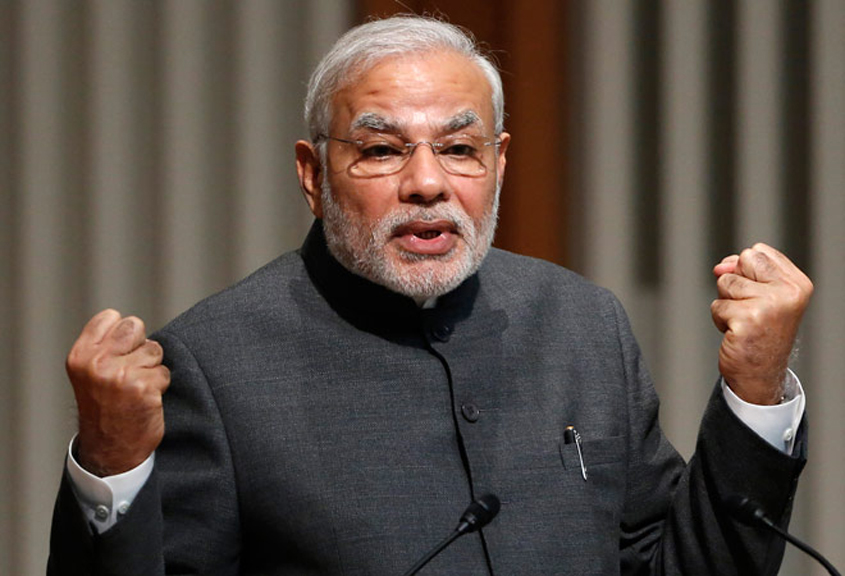Mishra saw the “cashless” economy as being a force multiplier for orderly growth, while Doval regarded the measure as having the potential to deal a death blow to counterfeiting and to terror financing. Adhia envisaged a substantial increase in the direct tax base from the currency demonetisation, while the RBI Governor calculated that about Rs 450,000 crore of currency would get extinguished, thereby relieving some of the pressure exerted by NPAs on the banking system.
Prime Minister Modi has, from the time he was Chief Minister of Gujarat, treated official views with considerable respect and has run government with their help, rather than in a “Bureaucracy Lite” manner of depending instead on outside expertise. From 8 November onwards, Modi’s fate, that of the BJP, and that of the Indian economy depends on the success of the manner in which the “note ban” was implemented, especially during the 50-day grace period requested by Modi in his words to the nation. Overall, the assessment of the Opposition is that the results of the past nine weeks bear out their own pessimistic forecasts, rather than the optimism of the BJP about the impact of the record-breaking measure.
The calculation of the Opposition is that there has been a 40%-60% contraction in much of industrial production after the note ban, with consumption, especially in the rural areas, falling by 45%. They point to the closure of textile units and power looms in Gujarat and Punjab as a pointer towards future election results in these states. They calculate that the Services sector has been massively hit, with the consequent loss of millions of jobs. The Opposition claims that Bihar, UP, Jharkhand and West Bengal have seen the biggest reverse migration since the 1970s. If true, such a return of newly unemployed individuals would have repercussions on recruitment to Maoist and underworld groups. However, the BJP leadership says that all such calculations are false and that the economy (including employment) has actually been doing better since 8 November 2016, because of the “cleansing operation” conducted by PM Modi. However, there seems little doubt that the denial of cash in the form of new currency to cooperative banks has affected credit to farmers, few of whom rely on commercial banks for their needs. According to officials connected with the exercise, the daily production of Rs 500 notes stands at below Rs 1,000 crore, which is judged to be too slow.
However, Revenue Secretary Adhia is known to be confident of mopping up large sums of money from new taxpayers, as well as from the existing assessees. The Income-Tax Department has been given a free hand by PM Modi to go after tax evaders, and it is expected that at least six million new income-tax assessees will get added to the roster of direct taxpayers during 2017. Given the additional moneys needed for bank recapitalisation, 7th Pay Commission, defence equipment, infrastructure development and social welfare schemes
The BJP is relying on fissures within the Opposition, and in particular expects Janata Dal United supremo Nitish Kumar to return to the NDA. However, contacts within that party say that the ambitious Bihar leader is awaiting the results of the UP Assembly elections, before deciding on his strategy. They say that he will move into the NDA only if the BJP becomes the single largest party in the new Assembly, and is comfortably ahead of the Bahujan Samaj Party and the Samajwadi Party. Otherwise, he will remain in the Opposition corner. The other potential ally is the Biju Janata Dal, as on several issues the NDA and the BJD are having a similar view. In UP, the BJP is relying on a continuation of Opposition disunity, and certainly there seems zero prospect of the BSP and the SP ever joining hands, while in Bengal the CPM and the Trinamool Congress are unlikely to fight the polls together, nor the Janata Dal Secular and the Congress in Karnataka. The BJP is expecting a boost in the Assembly polls next month that would carry over into the Assembly polls of 2018, most crucially in Gujarat, thereby setting the stage for the 2019 Lok Sabha polls.
Anti-BJP elements are working throughout the country to create a perception that the gold in the possession of households will get seized by the Modi government. They have been assisted in this by a few remarks of some officials on the subject, and are aware that the possession of gold is at the core of identity in India, hence the effort to create insecurity regarding the safety of even the family gold in the possession of households for generations, much of which does not have any documents to establish provenance. During the coming weeks, a coordinated effort will be launched that targets Prime Minister Modi on the issue of corruption. Now that the PM has made the war on corruption and on black money the main plank of his appeal to the electorate (in place of jobs and development, which was the rallying cry in 2014), the Opposition is seeking to demolish the reputation for probity and good governance of the Prime Minister, aware that the BJP depends almost completely on the good name of Prime Minister Modi to win votes.
Should the demonetisation of Rs 500 and Rs 1,000 currency notes prove problematic in the manner forecast by the Opposition, it would be tough going for the BJP, including in the forthcoming Budget Session of Parliament. Charges of misgovernment and corruption against the PM and his government will be a daily occurrence, while ED and CBI raids and charge-sheets of Opposition elements are expected to multiply. Although more than two years away, the frenzy and fury of the coming Lok Sabha campaign is already manifesting itself in the politics of the country, and it will be the after-effects (or, as the Opposition hopes, aftershocks) of Prime Minister Modi’s 8 November 2016 move that will determine the politics of the country from now onwards.

